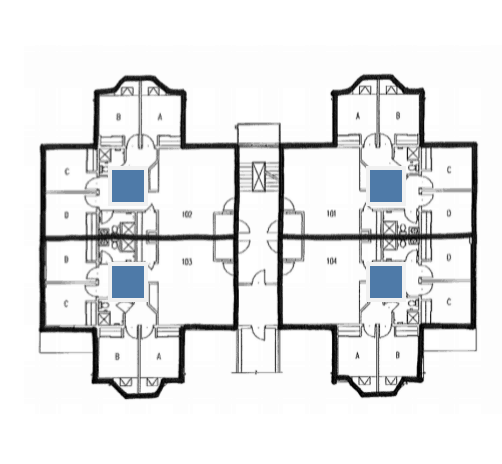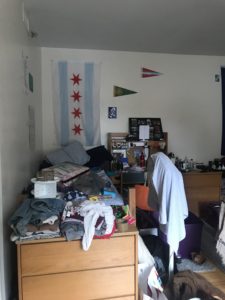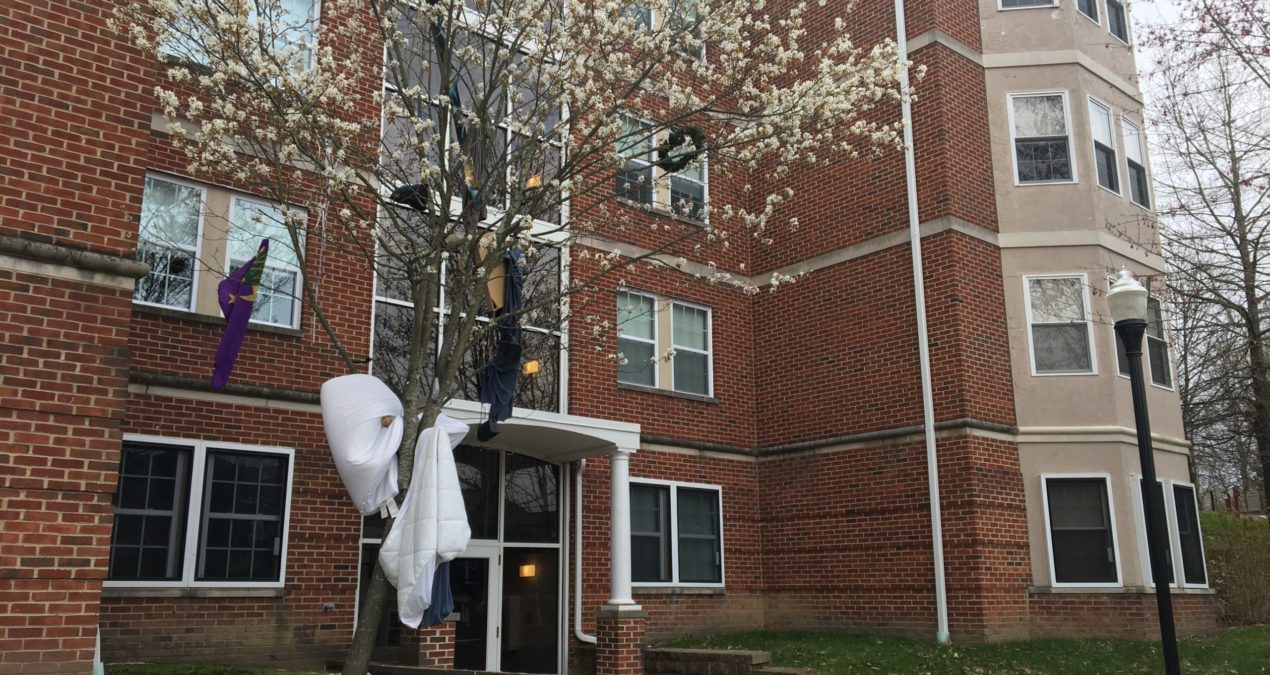Alina Panek, Editor-in-Chief —
With the stay-at-home order in Ohio and across the country, an ongoing concern has been how students would retrieve their belongings left on campus.
Dr. Laurel Kennedy, Vice President of Student Development, and Red Corps members and Data Analytic majors, Brock Freeland ‘20 and Lauren Danielson ‘20, are creating a campus map that would negotiate all of the needs and the current state of the campus for planning purposes for possible situations.
“Because students left their rooms in all manner of conditions, the first challenge is to figure out what is actually happening,” Kennedy said.
Some students left their rooms as is, and went on their travels expecting to be able to return. Others gathered as much as they could fit in their luggage, leaving the rest in boxes as best they could under the tight timelines as they caught their planes, buses, and cars to self-quarantine safely off-campus.
There was little Kennedy could confirm during this uncertain time but some things were definite. “We won’t throw students’ belongings away!” she wrote in an email. “Promise, promise, promise.”
Kennedy also confirmed that student belongings could stay in the rooms, but some other spaces on campus were being readied for additional storage for other possibilities. No belongings would be heading into commercial storage at this time.
In addition to accommodating the range of student needs for their belongings, Denison was also requested by local first responder agencies like the fire department, paramedics, etc, to quarantine confirmed COVID-19 cases on campus.
“We need to strike a balance,” Kennedy said in a phone interview. “Lightly map all the resident halls on campus. If we need to get into a residence hall for a public purpose… which hall would meet this critical service, require the least amount of cleaning and least disruptive to students who want to get their stuff?”

The buildings that immediately became available for local agencies’ need for isolation after a deep cleaning were the Bancroft house and the Monomoy Annex.
“We are 100% committed to helping our first responders,” Kennedy said.
But many students have yet to retrieve their remaining belongings, as this was suspended on March 23 at 4 p.m., the day after Ohio governor Mike DeWine issued a stay-at-home order.

after the announcement
that Denison is moving to remote learning
for the rest of the semester.
“Quite honestly, I don’t know [when students will be able to pick up their belongings]. I watch the data everyday with the numbers in Licking County, in Ohio.”
The order is set to expire currently at May 1, and many are optimistic as Amy Acton, the director of the Ohio Department of Health [and Denison parent!] says that COVID-19 case numbers are lower than predicted.
“We’ve won the first battle in the war, but we can’t stop here. There are other battles yet to fight,” Acton said at a daily press conference. “We’re in that kind of flat spot right now at the top of our first peak … We’re going to have good days and bad days.”
As of April 20 at 2 p.m, the Licking County Health Department is reporting 96 positive test results for COVID-19 and four deaths within the county.
The stay-at-home order still has the potential to be extended past May 1.
“To me, it’s unlikely to lift on May 1,” Kennedy said. “Plus, May 1 isn’t great for us because that’s the last two weeks of semester. We know that this is very stressful and people are anxious about traveling and just acknowledging the stress that comes with those final weeks with tests.”
Students received an email about three days before their spring break on March 10 that Denison was moving to remote learning, at that time guaranteed only for a few weeks. In Weinberg’s March 10 email about remote learning, he wrote, “we strongly encourage students to take all of their belongings if at all possible, and especially all items and materials they need to continue their studies remotely.”
It became more apparent that students would have to pack up and leave campus for the rest of the semester through the services Denison provided the students, information sessions at multiple residence halls on each quad, and providing no charge cardboard boxes and tape for students to rapidly pack up their lives and leave.

To keep track of each student’s situation as they left their rooms, administration requested that each student complete a survey about the state that they left their rooms. As of April 18, 1,754 students (73%) completed the survey.
“Students were not responding to the survey,” Kennedy said. “The numbers climbed really slowly. I think students didn’t like the possible answers and just didn’t answer.” She continued to explain she understands how students could look at the options given in the survey and feel frustrated and not complete, but the information is a necessity to understand the state of our campus.
Students scrambled to get their rooms in order in the following days. An email update from Housing asked for each room to be completely boxed up with names complete with addresses for belongings that couldn’t make it with their owners in travel.
The last students to leave were on March 25. For the protection and safety of the Building Facility assistants, they entered residence halls to deep clean for use for medical personnel on March 30. They chose this date as COVID-19 can live up to three days on surfaces, according to the administration’s research on the virus. Building facilities administration entered the residence halls, threw out perishable items, and documented the state of the rooms.
“I have a lot of heroes at Denison right now, Michael Supp, [Assistant Director Operations for Building Facilities] is one of them,” Kennedy said. “He is the lead on worker safety. He put together for protocol for how they would work together. I think it’s phenomenal. [Building facilities assistants] are in very small groups to reduce exposure to others. Within your team, you practice social distancing. They are sanitizing the residence halls in their PPE.”
Christina Black, a Building Facilities Assistant, was one of the 22 volunteered employees to help out with the deep cleaning initiative. She worked for three days, cleaning residence halls with only one person assigned to cleaning each living space and is now on paid leave.
“I feel that Denison is definitely going above and beyond in taking care of all their employees,” Black said. “They did not have to give us this paid time off since we are essential workers.”
For the Red Corps project, Freeland and Danielson are using the data from the student survey and documentation status given by Building Facilities administration to create the map that will be used by Student Development and Housing when the time comes for students to pick up their belongings and to find the best residence halls for local agencies’ need for COVID-19 isolation. They plan to finish by the end of April. If you are a student, help them out by filling out the survey in MyDenison under MyHousing surveys, whether you like the options or not.

